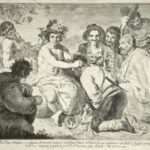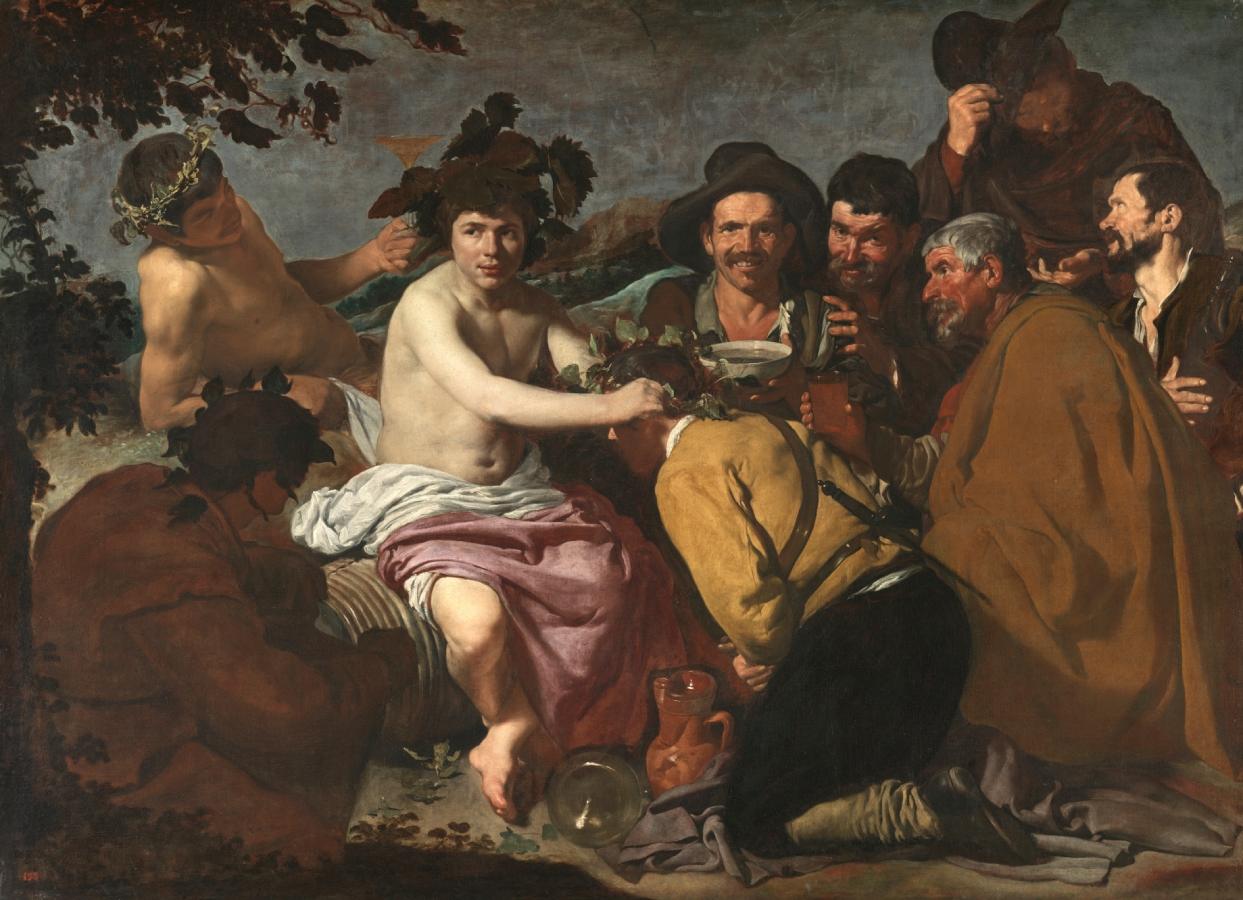Velázquez, Diego (1599-1660)
Los borrachos, o El triunfo de Baco (The Drunkards, or The Triumph of Bacchus)
1628–1629
Oil on canvas, 165 x 225 cm
Museo del Prado, Madrid
Documentation of payment received by Velázquez in July 1629 for an image of Bacchus painted at the king’s behest informs us of the work’s approximate date and identifies its intended recipient. This was shortly before the artist’s first visit to Italy, barely five years after he began working for the king and at a time when he had just met Rubens. During this period, he was specialized in portraiture, although he had recently completed a renowned history painting –The Expulsion of the Moors– and had considerable experience with religious and costumbrista scenes. This was his first attempt at depicting a mythological fable, and he did so with a palette, descriptive methods and human types that recall his earlier years in Seville, although here he combined them with significant formal innovations. These circumstances make The Drunkards a turning point, launching a new subject that would be present for the rest of the artist’s career. At the same time, this work draws heavily on Velázquez‘s previous works. The presence of Bacchus allowed the painter to depict one of his first male nudes, and that figure dominates the composition thanks to the luminosity of his body and clothing. A nude satyr to the left raises a fine crystal goblet, drawing us into the world of fabulous stories and creatures while, on the right, a beggar and four men with dark-brown capes, weathered faces and lively expressions constitute an everyday, realistic and believable counterpoint. A young figure kneels before them to be crowned by the god. As often occurs in Velázquez‘s narrative works, this composition is steeped in an ambiguity that has led to considerable speculation about its deeper meaning. Attention has traditionally been drawn to the realistic rendering of the characters on the right, which has been read as a demystification of the classical fable, and even a mockery of Antiquity. More recently, however, an increasing number of scholars have emphasized the degree to which the nature of the Bacchic myth itself favors the combination of fabulous elements with everyday references. In that sense, the painting has been interpreted as an allegory of wine, which is not only able to cheer humans and induce non-rational states, but also to stimulate poetic creation, as was observed by numerous Spanish writers from Velázquez‘s time. Perhaps that is why the crown that Bacchus places on the young man’s head is not of grape leaves, like his own, but of the ivy traditionally associated with poets. In any case, with The Drunkards, Velázquez demonstrated the degree to which the possibilities of a naturalist language surpass the limits of religious or costumbrista subject matter, making it adequate for representing mythological scenes. At the same time, this work is the first indication of the artist’s fondness for mixing classical fables and everyday contents, eschewing the idealized approach that had previously been customary in that genre. (Fábulas de Velázquez. Mitología e Historia Sagrada en el Siglo de Oro / edición a cargo de Javier Portús Pérez, Madrid, Museo Nacional del Prado, 2007, p.313).
Los Borrachos in Art:
 Goya, Francisco de (1746-1828)
Goya, Francisco de (1746-1828)
Los borrachos, o El triunfo de Baco
1778
Hermitage Museum, Saint Petersburg
 Manet, Édouard (1832-1883)
Manet, Édouard (1832-1883)
Émile Zola
1868
Musée d’Orsay, Paris
